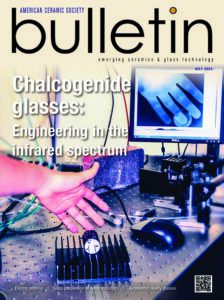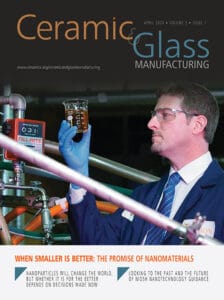
Diletta Sciti, PhD, serves as the Director of Research at the National Research Council – Institute of Science, Technology, and Sustainability for Ceramics (CNR-ISSMC) in Faenza, Italy. After completing her master’s degree in physics with honors at the University of Bologna, Italy, she began her career at ISSMC (formerly ISTEC) as a research fellow and has been a permanent CNR researcher since 2001. In 2007, she earned her PhD in Engineering from the Kyoto Institute of Technology in Japan.
As a group leader at ISSMC, her focus lies on structural and ultra-high temperature ceramics and composites for severe environments. She is particularly interested in understanding the fundamental correlations between processes, microstructures, and properties, as well as exploring novel processes, manufacturing prototypes, and testing in relevant environments. Since 2010, she has led international projects, including an €8M EU-Horizon 2020 program focused on Ultra-high temperature ceramic matrix composites for aerospace, along with research projects funded by US Agencies (AFOSR, US ARO, and ONR), Italian agencies (ASI), and the Italian Ministry of Defense. Additionally, she oversees technology transfer contracts for Italian companies and serves as a PhD Faculty Board Member in Material Science & Technology at the University of Parma, Italy. In 2021, following a brief assignment as the acting director of the former ISTEC, she co-founded a CNR spin-off to bring UHTCMC materials to market.
She actively contributes to the academic community by organizing symposia for ECERS and other conferences since 2015. She also serves as an Editorial Board Member and Guest Editor for the Open Ceramics Journal and has been an Associate Editor of the Journal of the American Ceramic Society since 2022. Recently, she was appointed Chair of the 2024 ECI conference on UHTCs in Italy and is a Member of the International Advisory Board for various international projects. With approximately 250 technical publications and 10 patent applications, some of which have been granted in the US and Europe, she was honored as a Fellow of the European Ceramic Society in 2023.
Abstract: Could UHTCs and UHTCMCs be enabling solutions for extreme environments?
CNR-ISSMC, National Research Council of Italy – Institute of Science, Technology and Sustainability for Ceramics, Via Granarolo 64, 48018 Faenza, Italy
New space exploration trends require materials capable of withstanding extreme universe conditions. ‘Hostile environments’ cover thermochemical, thermophysical, and thermomechanical challenges that may occur simultaneously. Ultra-high temperature ceramics (UHTCs), like transition metal carbides, nitrides, and diborides, meet these demands with melting points exceeding 3000°C and high thermal conductivity (>100 W m-1 K-1). They form stable, high melting temperature oxides and boast remarkable mechanical strength. More recently, the severe requirements of hypersonic travel have led to the creation of composites known as ultra-high temperature ceramic matrix composites (UHTCMCs), made of UHTC matrices incorporating reinforcing fibrous phases. These composites represent an advancement over UHTCs due to their superior damage tolerance and thermal shock resistance, and can be considered a novel subfield of CMCs for their ability to operate at temperatures much higher than 1600°C. This lecture will outline key research on ultra-high temperature ceramics (UHTCs) and composites (UHTCMCs). The covered topics range from understanding process, microstructure and properties relationship, to functionalizing materials through appropriate methodologies, and to creating demonstrators for technology validation in relevant environments, such as plasma wind tunnel tests or propulsion tests up to 2500°C. Scale-up issues and technological challenges will also be addressed.
Subscribe to Ceramic Tech Today

Don’t miss the latest ceramic and glass materials news. Receive the CTT newsletter to your email three times a week by subscribing at this link.
Subscribe to Ceramic & Glass Manufacturing Weekly

Don’t miss the latest ceramic and glass business news. Receive the C&GM Weekly newsletter to your email every Monday by subscribing at this link.


